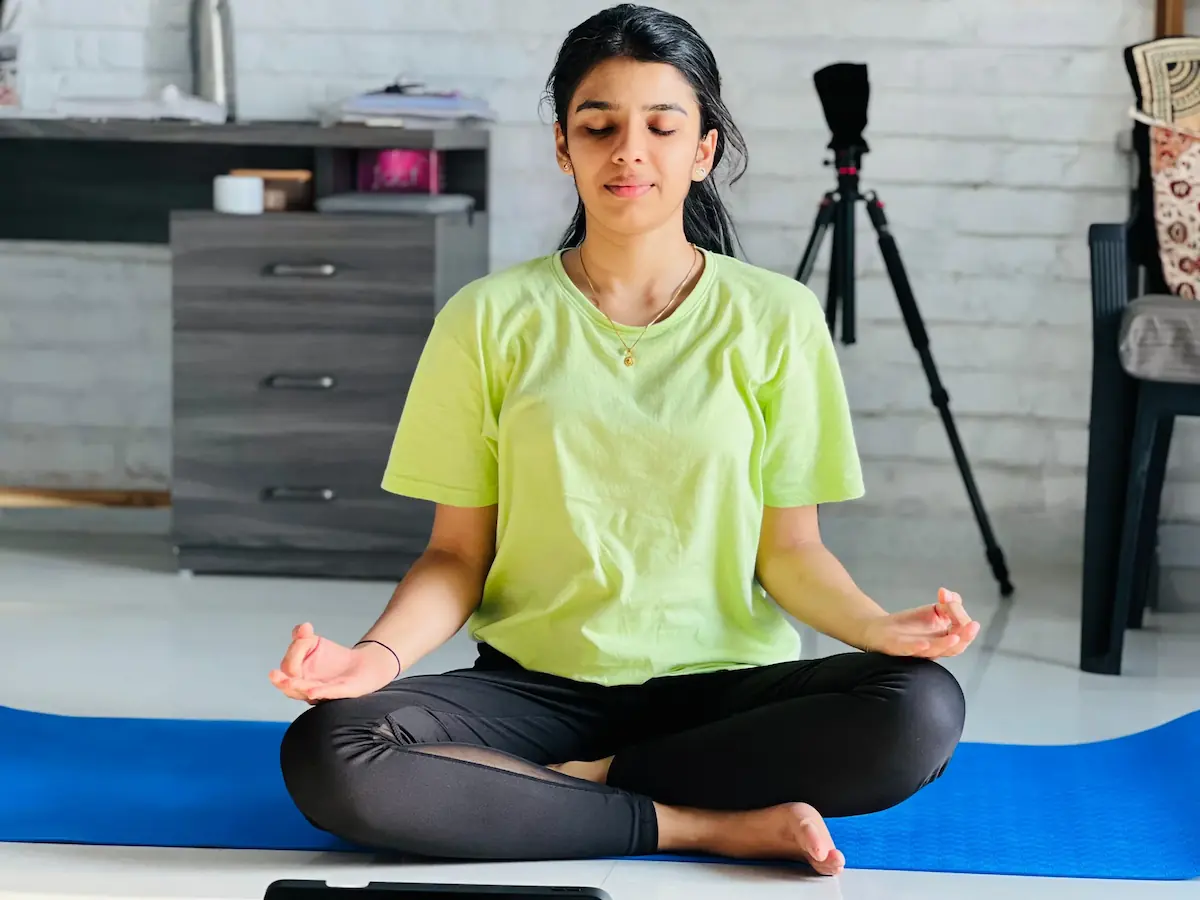Runners, want to boost your stamina and stay injury-free? Yoga for runners can be your secret weapon! These 7 poses are designed to enhance endurance, improve flexibility, and protect against common running injuries. Perfect for all levels, this runner’s yoga routine will help you run stronger and longer. Let’s explore these yoga poses for stamina and yoga to avoid injuries to elevate your running game!
Why Runners Should Practice Yoga
Yoga enhances runners’ performance by improving flexibility, strengthening muscles, and reducing injury risk. A 2023 Journal of Sports Medicine study found that runners practicing yoga weekly reduced injury rates by 15%. It also boosts lung capacity and mental focus, key for stamina. Incorporating yoga for runners into your routine can help you recover faster, run more efficiently, and stay on the track longer.
7 Yoga Poses to Boost Stamina and Prevent Injuries

These seven poses are tailored for runners, helping to build stamina, increase flexibility, and prevent injuries like shin splints or runner’s knee. Each pose in this runner’s yoga routine strengthens key muscle groups, improves breathing, and promotes recovery, ensuring you stay strong on every run. Add these yoga poses for stamina to your schedule and feel the difference in your performance and resilience.
Downward-Facing Dog (Adho Mukha Svanasana)
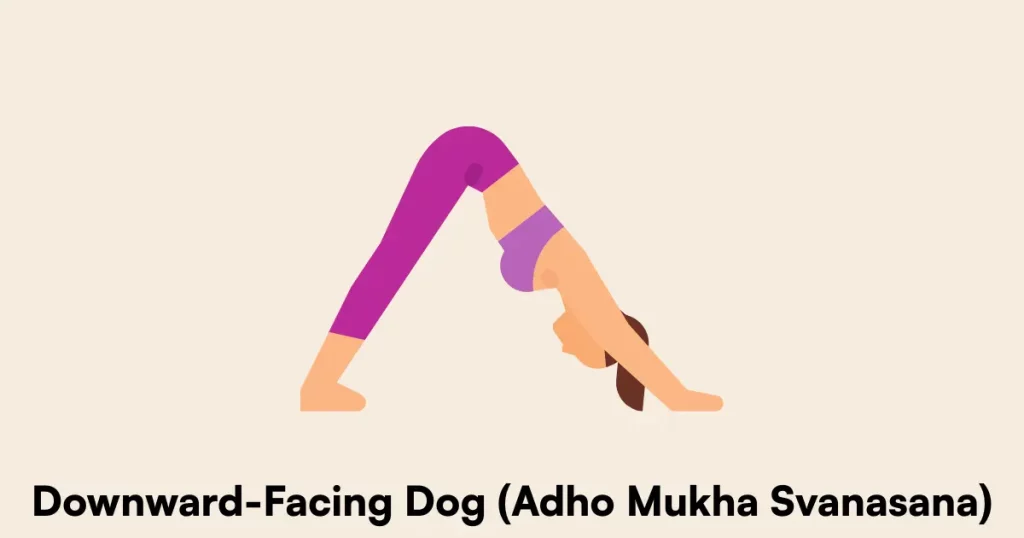
Downward-Facing Dog strengthens the calves, hamstrings, and core, crucial for runners to build stamina. It also lengthens the spine and improves circulation, aiding recovery and reducing injury risk. Start on all fours, tuck your toes, and lift your hips into an inverted V-shape. Spread your fingers, press into your palms, and hold for 1 minute, breathing deeply to engage your entire body.
This pose also enhances lung capacity by opening the chest, helping you breathe more efficiently during runs. It relieves tension in the lower back, a common trouble spot for runners, preventing strain. As you hold the pose, focus on pushing your heels toward the ground, feeling the stretch in your legs, and imagine your stamina growing with each steady, deep breath.
Cat-Cow Pose (Marjaryasana-Bitilasana)
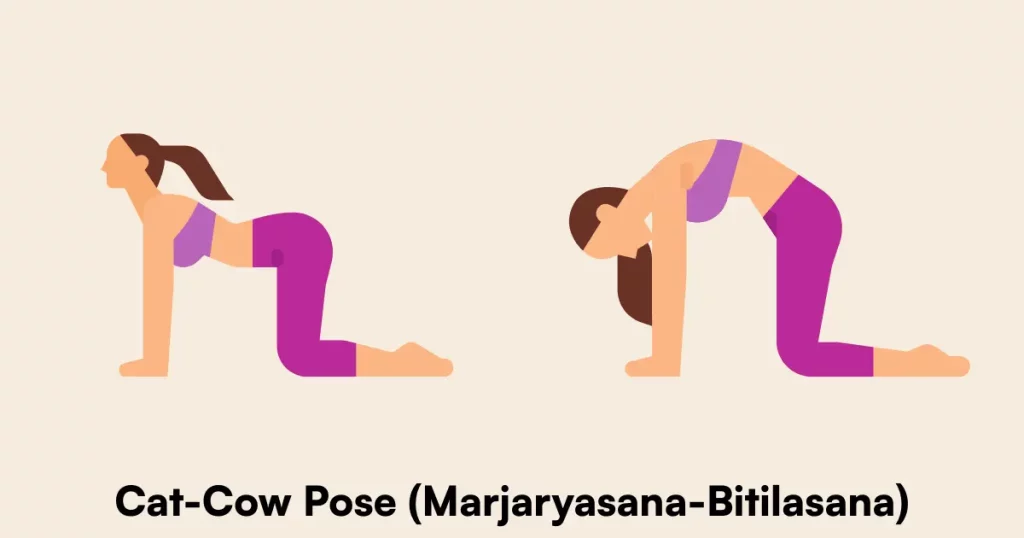
Cat-Cow Pose mobilizes the spine, improving posture and reducing the risk of back injuries from running. It also strengthens the core, supporting endurance by stabilizing your body during long runs. On all fours, inhale to drop your belly and lift your gaze (Cow), then exhale to round your back and tuck your chin (Cat). Flow for 1–2 minutes, syncing breath with movement.
This flow also calms the mind, helping you stay focused during runs, which can boost stamina. It gently stretches the torso, relieving tightness in the back and shoulders caused by running posture. As you move, let each breath deepen your focus, visualizing a stronger, more resilient body ready to tackle any distance with ease and grace.
Low Lunge (Anjaneyasana)
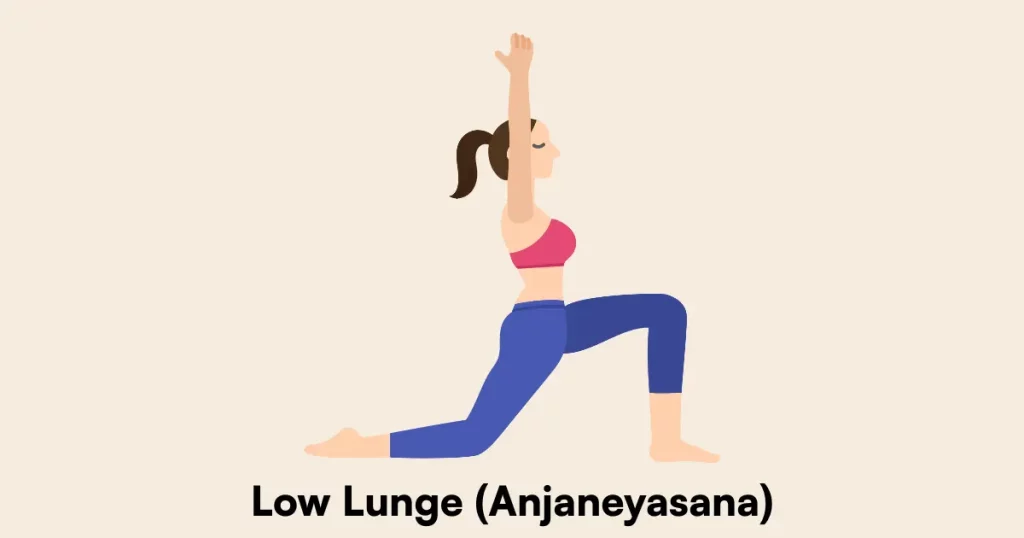
Low Lunge opens the hip flexors, which tighten from running, improving stride length and stamina. It also strengthens the quads and glutes, reducing strain on the knees to prevent injuries. Step one foot forward into a lunge, lower your back knee to the ground, and sink your hips forward. Hold for 30 seconds per side, keeping your front knee over your ankle.
This pose enhances balance, critical for uneven terrains, helping you run longer without fatigue. It also stretches the psoas muscle, relieving tension that can lead to lower back pain. As you breathe deeply, feel your hips open, imagining each exhale releasing tightness and each inhale fueling your endurance for a stronger, injury-free running experience.
Warrior I (Virabhadrasana I)
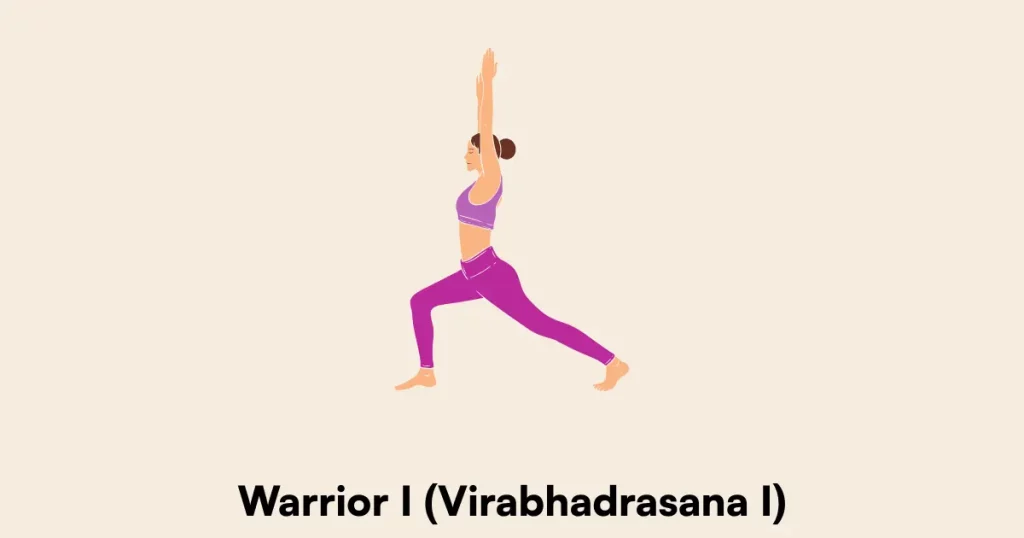
Warrior I builds strength in the legs and core, boosting stamina for longer runs. It also opens the chest, improving lung capacity to enhance endurance while reducing injury risk. Step one foot forward, bend your front knee to 90 degrees, and square your hips. Lift your arms overhead, hold for 30 seconds per side, and breathe deeply to feel grounded.
This pose also improves mental focus, helping you push through challenging runs with determination. It stretches the hip flexors and strengthens the glutes, protecting against runner’s knee and shin splints. As you hold Warrior I, visualize yourself as a strong, steady runner, letting each breath empower you to run farther and faster without strain.
Pigeon Pose (Eka Pada Rajakapotasana)
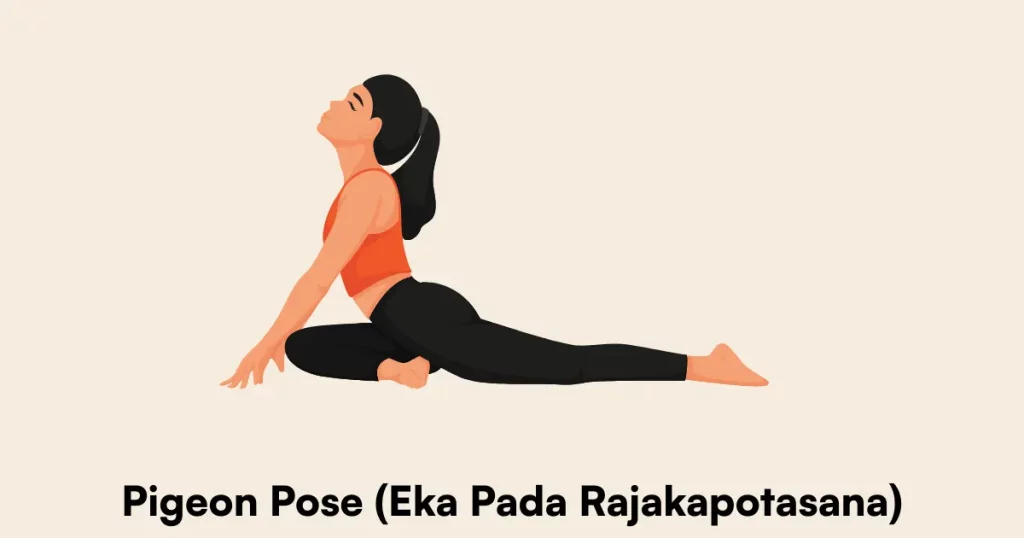
Pigeon Pose deeply stretches the hips and glutes, releasing tension that can lead to IT band issues or knee injuries. It also improves flexibility, allowing for a smoother stride and better stamina. Bring one shin forward, extend the other leg back, and lower your hips toward the ground. Hold for 1 minute per side, breathing deeply to relax into the stretch.
This pose also promotes recovery by increasing blood flow to the lower body, helping muscles repair after runs. It calms the mind, reducing stress that can tighten muscles and cause injuries. As you settle into Pigeon, focus on the release in your hips, imagining each breath preparing your body for injury-free, endurance-filled runs with ease.
Bridge Pose (Setu Bandhasana)
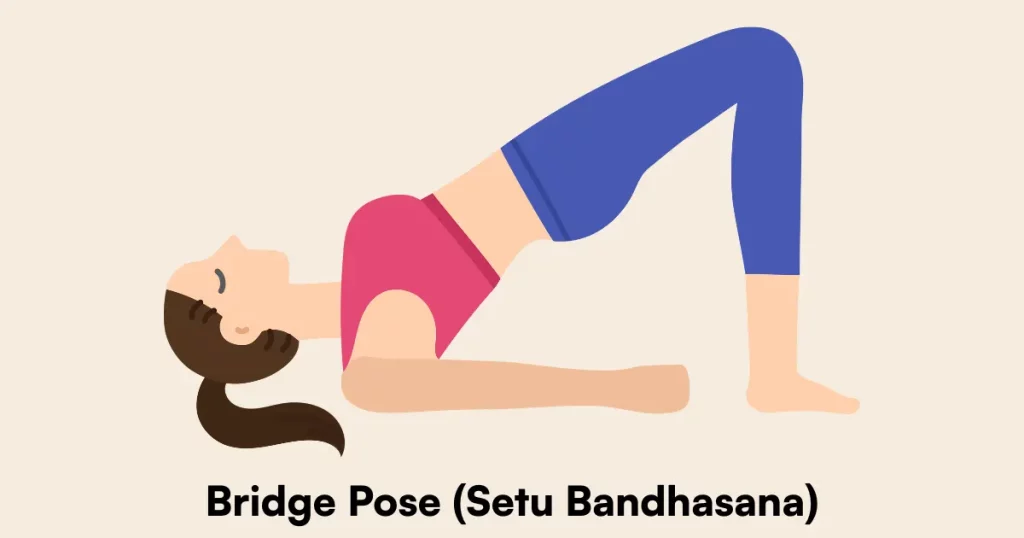
Bridge Pose strengthens the glutes and lower back, key for runners to maintain stamina and avoid lower body injuries. It also opens the chest, improving breathing efficiency during runs. Lie on your back, bend your knees, and place your feet hip-width apart. Lift your hips toward the ceiling, hold for 30 seconds, and breathe deeply, engaging your core and glutes.
This pose also corrects imbalances from running by strengthening the posterior chain, reducing strain on the knees and hips. It helps release tension in the upper back, promoting better posture for efficient running. As you lift your hips, feel your body grow stronger, envisioning each breath fueling your stamina for longer, safer runs without discomfort.
Reclining Spinal Twist (Supta Matsyendrasana)
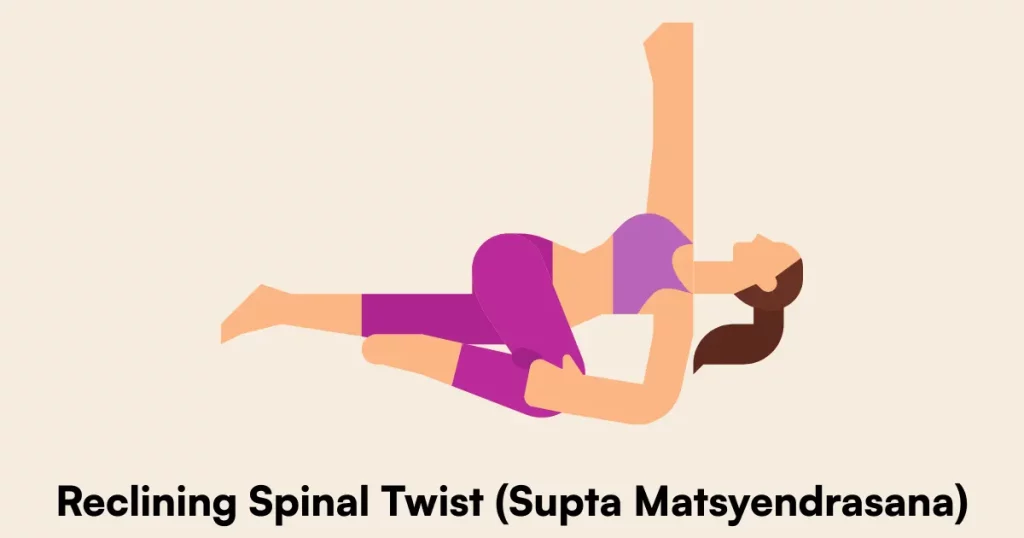
Reclining Spinal Twist releases tension in the spine and hips, preventing injuries like lower back pain from running. It also improves spinal mobility, supporting endurance by maintaining proper alignment. Lie on your back, hug one knee to your chest, and guide it across your body to the opposite side. Hold for 30 seconds per side, breathing deeply to deepen the twist.
This pose also calms the nervous system, reducing stress that can lead to muscle tightness and injury. It enhances recovery by promoting circulation, helping your body reset after a run. As you twist, let each exhale release tension, imagining your spine aligning perfectly, preparing you for stronger runs with improved stamina and a lower risk of injury.
How to Create Your 10-Minute Runner’s Yoga Flow
Set up a 10-minute yoga flow to complement your runs:
- Start: Begin with Downward-Facing Dog (1 minute) to warm up.
- Flow: Move through Cat-Cow (1 minute), Low Lunge (1 minute per side), Warrior I (1 minute per side), Pigeon Pose (1 minute per side), Bridge Pose (1 minute), and Reclining Spinal Twist (1 minute per side).
- Repeat: Adjust timings to fit 10 minutes, focusing on breath.
Practice post-run on a mat ($20–$30) for best results.
Tips for Best Results
- Practice after runs to aid recovery and prevent stiffness.
- Use a supportive mat for comfort during poses.
- Focus on deep breathing to enhance relaxation and stamina.
- Pair with other activities—explore more in Yoga vs Walking: Which Is Better for Your Health?.
- Stay consistent with 3–5 sessions weekly for lasting benefits.
Who Can Practice These Poses?
These yoga poses for stamina suit runners of all levels, from beginners to marathoners. Modify poses like Pigeon by using a block if needed. Those with injuries should consult a professional. This runner’s yoga routine complements running schedules, enhancing performance and recovery.
Common Challenges and Solutions
- Tightness: Start with shorter holds, like 15 seconds, and ease in.
- Balance Issues: Use a wall for support in Warrior I.
- Time Crunch: Do 3 poses (e.g., Downward Dog, Low Lunge, Bridge) in 5 minutes.
- Soreness: Skip deeper stretches like Pigeon if post-run discomfort is high.
Real-Life Impact
Take Maya, a 35-year-old runner, who improved her stamina by 10% in 3 weeks with this yoga for runners routine. Or Arjun, a 40-year-old marathoner, who avoided knee pain after adding Pigeon Pose. This yoga to avoid injuries flow can transform your runs—will you try it?
FAQs About Yoga for Runners
How Does Yoga Help Runners?
Yoga improves flexibility, strengthens muscles, and boosts stamina, reducing injury risk by 15%, per a 2023 study, helping runners perform better.
How Long Should Runners Practice Yoga?
A 10-minute flow, like this one, post-run is enough to enhance stamina and prevent injuries, fitting easily into busy schedules.
Is Yoga Suitable for Beginner Runners?
Yes! These poses are beginner-friendly, with modifications like using blocks in Pigeon, making yoga for runners accessible to all levels.
How Often Should Runners Do Yoga?
Aim for 3–5 sessions weekly to see benefits like improved stamina and fewer injuries, practicing consistently for lasting results.
Can Yoga Help Runners Recover from Injuries?
Yes, poses like Reclining Spinal Twist promote recovery by improving circulation and releasing tension, but consult a professional if injured.
Conclusion
These 7 poses in your runner’s yoga routine can boost stamina and prevent injuries, making every run stronger and safer. From Downward-Facing Dog to Reclining Spinal Twist, yoga for runners helps you thrive. Start this yoga poses for stamina practice today! Which pose will you try first? Share below and let’s run better together!

